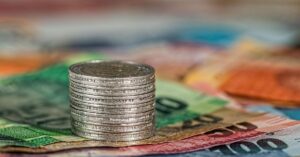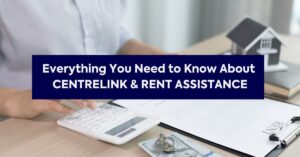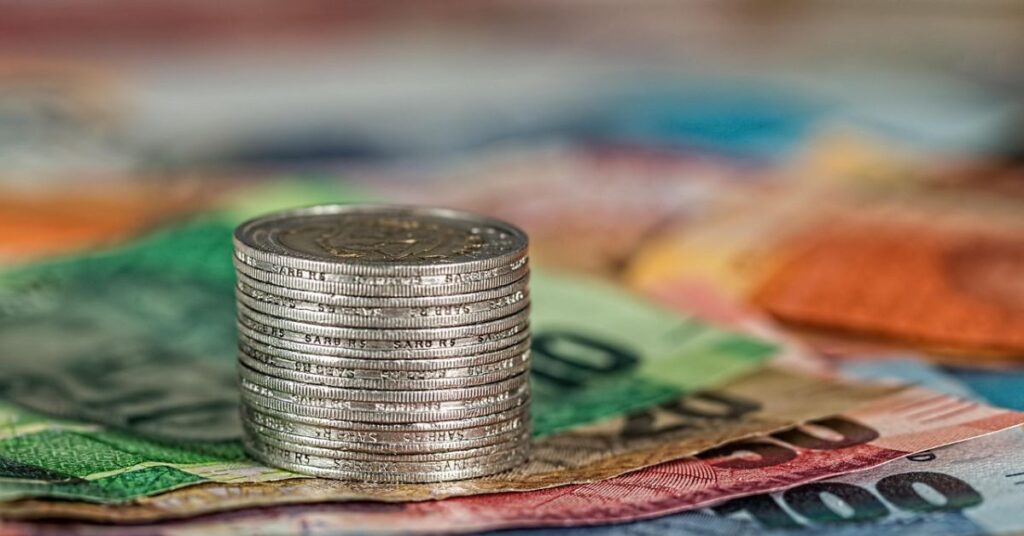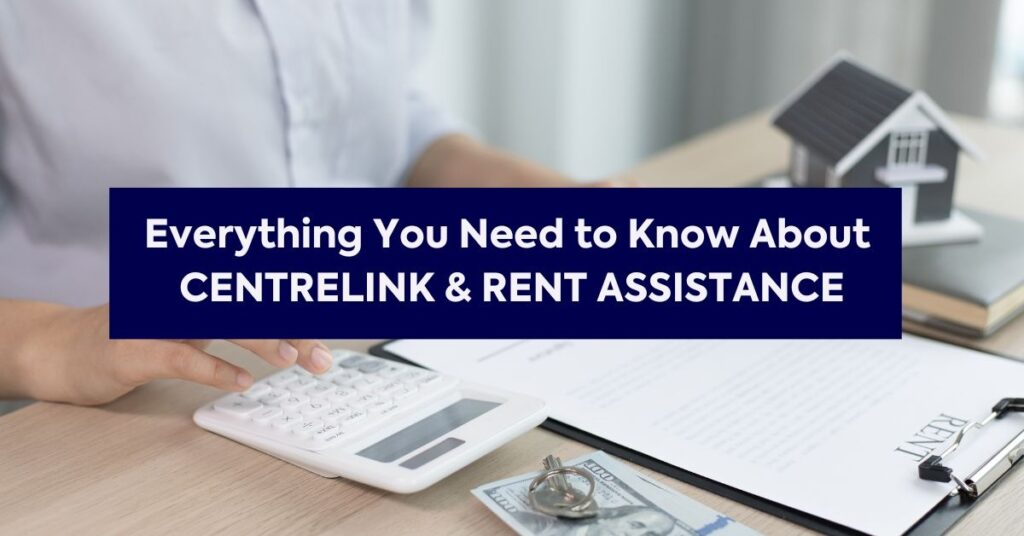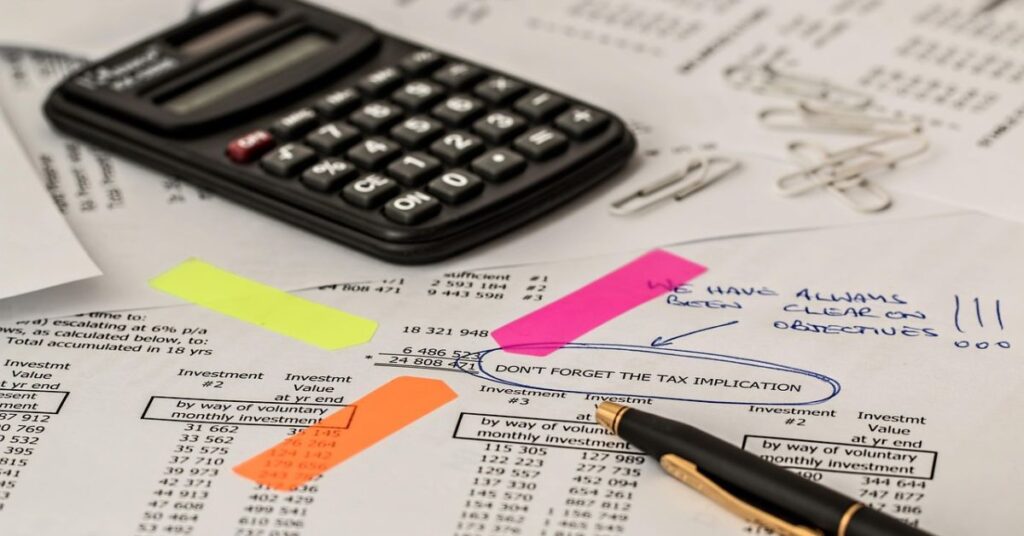If you’re finding it tough to pay a bill from Revenue NSW all at once, setting up a payment plan might be the answer. It’s a way to spread out what you owe into smaller, more manageable chunks. Instead of one big hit, you pay off your debt over time with regular instalments, usually weekly or fortnightly. This can make a significant difference when you’re trying to budget and keep on top of your financial commitments.
Introduction to the Revenue NSW Payment Plan

If you’re finding it tough to pay a bill from Revenue NSW all at once, setting up a payment plan might be the answer. It’s a way to spread out what you owe into smaller, more manageable chunks. Instead of one big hit, you pay off your debt over time with regular instalments, usually weekly or fortnightly. This can make a significant difference when you’re trying to budget and keep on top of your financial commitments.
Revenue NSW handles debts for various government agencies, including TAFE NSW, Transport for NSW (like e-Toll), some local council fees, and others. So, if you’ve received a notice for a debt from one of these bodies, a payment plan could be an option. The goal is to provide a structured approach to clearing your outstanding amounts without causing undue financial stress.
Setting up a payment plan means you agree to pay a certain amount on a set schedule until the debt is fully paid. It’s a formal arrangement, and sticking to it is important to avoid further issues.
To get started, you’ll typically need your payment reference number from the notice you received. You’ll also need your personal details and payment information, like bank account or credit card details. If you don’t have a MyServiceNSW account already, you can usually create one as part of the process. This system is designed to make managing these payments a bit easier, especially with the my Debts online service available for many debts. It’s a good idea to have your identification documents handy too, as they might be needed to confirm your details.
Why Use A Revenue NSW Payment Plan – Benefits And Use Cases
Sometimes, life throws you a curveball, and you find yourself unable to pay a bill or fine all at once. That’s where a Revenue NSW payment plan really comes in handy. It’s a way to manage your debts without the stress of a huge upfront payment. Instead of facing penalties or further action, you can break down what you owe into smaller, more manageable chunks. This makes it much easier to get back on track financially.
There are a few good reasons why you might want to set one up:
- Avoids further penalties: If you don’t pay on time, you could end up with late fees, interest, or even have your driver’s licence suspended or vehicle registration cancelled. A payment plan stops this from happening as long as you stick to the agreement.
- Manages cash flow: By spreading out payments, you can better control your budget and ensure you have enough money for other essential expenses.
- Reduces stress: Knowing you have a plan in place can take a lot of the worry away. You’re actively dealing with the debt instead of letting it pile up.
Setting up a payment plan is a proactive step towards resolving your debt. It shows Revenue NSW that you are committed to paying what you owe, even if you need a bit more time and a structured approach to do so. It’s about finding a workable solution that suits your current financial situation.
Eligibility Criteria For Applying For A Revenue NSW Payment Plan
To be considered for a Revenue NSW payment plan, there are a few things you need to tick off. Generally, these plans are for individuals and sole traders who owe money to specific NSW government agencies. This usually includes debts related to things like TAFE NSW, Transport for NSW (think e-Toll), some local council fees, icare, WaterNSW, and Service NSW. It’s important to note that these plans are typically not available for business debts.
Before you even think about applying, make sure you have your debt notice handy. You’ll need a payment reference number from it, which you can usually find in the ‘How to pay’ section. You’ll also need your personal details and, depending on how you’re applying, potentially your bank account or credit card information. If you’re setting up an account online, you might need to create a MyServiceNSW Account and have details from a couple of identity documents ready, like your driver’s licence or Medicare card. The name on these documents needs to match the name on your debt notice.
If you’re struggling to pay a debt, setting up a payment plan is a sensible step. It’s designed to make managing your financial obligations more manageable by breaking down larger amounts into smaller, regular payments. Don’t wait until things get too difficult; explore your options early.
Here’s a quick rundown of who can generally apply:
- Individuals and Sole Traders: The myDebts service is primarily for personal accounts. If you’re running a business, you’ll likely need to look at different arrangements.
- Debts from Specific Agencies: The plan needs to cover debts issued by Revenue NSW on behalf of certain government bodies. Check if your debt falls under one of these.
- Outstanding Amounts: You need to have an actual outstanding debt or fee notice. If you’ve already paid, there’s no need for a plan.
- Valid Identification: You must be able to verify your identity, usually with documents that match the name on the debt notice.
Required Documentation Before Starting A Revenue NSW Payment Plan
Before you can get a payment plan sorted with Revenue NSW, you’ll need to have a few things ready. It’s not a super long list, but having these items handy will make the whole process much smoother. Think of it as gathering your ingredients before you start cooking – it just makes things easier.
First off, you’ll need your payment reference number. This is usually found on the fee notice or debt notice you received from Revenue NSW. It’s like your unique identifier for that specific debt. If you can’t find your notice, don’t stress too much; you can contact Revenue NSW for help. They can usually track it down for you.
Next, you’ll need your payment details. This means having your bank account, Visa, or Mastercard information ready. This is how you’ll be making your payments, so make sure the card or account you plan to use is active and has sufficient funds. If you’re looking to transfer money from your superannuation, ensure you have all the necessary super account details and bank account details prepared.
Depending on your situation, you might also need details from two forms of identification. These could be things like your Australian driver’s licence, Medicare card, or passport. The key thing here is that the name on these documents must exactly match the name on your debt notice. It’s all about confirming your identity.
Here’s a quick rundown of what you might need:
- Payment reference number from your notice
- Your bank account or credit/debit card details
- Details from two identity documents (e.g., driver’s licence, Medicare card)
- Your Centrelink details (if applicable, and you want automatic deductions)
Step-By-Step Guide: How To Set Up Payment Plan Revenue NSW
How to set up payment plan revenue NSW is something you think, but it’s a pretty simple and easy process. Setting up a payment plan with Revenue NSW is a straightforward process designed to help you manage outstanding debts. If you’ve received a notice for fees or debts from various NSW government agencies, like TAFE NSW or Transport for NSW, and can’t pay the full amount at once, a payment plan can be a good option. The key is to act before the due date to avoid further penalties.
To get started, you’ll generally need a few things ready. This includes your payment reference number, which is found on your Revenue NSW notice. You’ll also need your personal details and payment information, such as your bank account or credit card details. If you don’t already have one, you’ll need to create a MyServiceNSW Account. This account is used to access the myDebts online service, which is where you’ll manage your plan.
Here’s a general outline of how to set up your payment plan:
- Access the MyDebts Portal: Log in to your MyServiceNSW Account. If you don’t have one, you can create it during this process. Once logged in, find and select the option to go to myDebts.
- Link Your Debt: Follow the prompts to link your specific fee or debt notice to your myDebts account. You’ll need that payment reference number for this step.
- Set Up the Plan: Within myDebts, you’ll be guided through setting up your payment plan. This involves agreeing to the terms and conditions and configuring your payment schedule. You can often choose between weekly or fortnightly payments.
- Confirm and Submit: Review all the details of your proposed payment plan before submitting your application.
It’s important to note that eligibility for a payment plan typically applies to personal and sole trader accounts. Business debts may have different arrangements.
If you’re receiving Centrelink payments, you might be able to arrange for automatic deductions from your pension or benefit through Centrepay. This can be a helpful way to ensure payments are made on time without you having to manually initiate them each period. You’ll usually need your Centrelink Reference Number (CRN) for this. For those struggling financially, exploring options like Afterpay for other purchases might help free up funds, though it’s not directly related to Revenue NSW plans.
If you encounter any issues during the setup process or don’t have a copy of your notice, contacting Revenue NSW directly is recommended. They can assist and clarify any details specific to your situation.
Configuring Payment Schedules In Your Revenue NSW Payment Plan
Once your Revenue NSW payment plan is approved, the next important step is to set up how you’ll actually make those payments. This is all about configuring your payment schedules. You’ll need to decide on the frequency and the exact dates for each instalment. Revenue NSW offers flexibility here, allowing for weekly, fortnightly, or monthly payments to suit your financial situation.
The key is to choose a schedule that you can consistently stick to. Missing payments can lead to your plan being cancelled, and you’ll have to pay the full amount owed, plus potential extra costs.
Here’s a breakdown of what to consider when setting up your schedule:
- Payment Frequency: Decide if you’ll pay weekly, fortnightly, or monthly. This often depends on when you receive your income.
- Payment Dates: Select specific dates for each payment. It’s a good idea to align these with your pay cycle to avoid missing them.
- Payment Amounts: Ensure each instalment amount is manageable for your budget. The total of all instalments must cover the full debt.
For example, if you have a debt of $1200 and opt for a 6-month payment plan with monthly instalments, you’d be looking at $200 per month. If you chose fortnightly payments over the same period, the amount per instalment would be lower, but you’d have more frequent payments.
If you’re receiving Centrelink payments, you might be able to arrange for automatic deductions directly from your benefit. This can be a really helpful way to ensure payments are made on time without you having to actively do anything each cycle. You’ll typically need your Centrelink Reference Number (CRN) and details about your benefit type for this. You can explore setting up these automatic deductions when you apply for a payment plan.
Check Payment Plan Revenue NSW
Keeping tabs on your Revenue NSW payment plan is pretty straightforward. You can easily check the status and details of your payment plan online. This is super handy if you want to see how much you’ve paid off, when your next instalment is due, or if you need to confirm your payment schedule.
There are a couple of ways to go about this:
- Using the MyDebts Portal: If you’ve set up a payment plan through MyDebts, logging into your MyServiceNSW Account is your first stop. Once you’re in, you can link your debt notice and view all your payment history and upcoming payments. It’s a pretty clear way to see where you stand with your payment plan revenue in NSW, and check your revenue NSW payment plan online.
- Contacting Revenue NSW Directly: If you’re having trouble with the online portal or need to discuss specific details about your Revenue NSW payment plan online, giving them a call is always an option. They can provide information on your current balance, payment dates, and any adjustments made.
It’s important to stay on top of these details to avoid any issues. For instance, if you’re managing a land tax payment plan, making sure your instalments are on time is key to avoiding extra charges. You can find more information on managing these plans on the NSW land tax payment plans page.
If you’ve missed a payment or are struggling to keep up, it’s best to get in touch with Revenue NSW as soon as possible. They might be able to help you sort things out before it becomes a bigger issue. Remember, proactive communication is always the best approach when dealing with any payment plan.
Monitoring And Tracking Your Revenue NSW Payment Plan Status

Once you’ve got your Revenue NSW payment plan sorted, keeping an eye on how you’re tracking is pretty important. It’s not just about making the payments; it’s about staying on top of things so you don’t run into any unexpected issues down the track.
Regularly checking your payment plan status helps you manage your finances effectively and avoid potential penalties. You can usually do this through the myDebts online service. This is where you can see your payment history, upcoming due dates, and the remaining balance. It’s a good idea to log in every so often, maybe once a month, just to make sure everything aligns with your records.
Here’s what you can typically track:
- Payment History: See all the payments you’ve made, including dates and amounts.
- Next Payment Due: Know exactly when your next instalment is due and how much it will be.
- Remaining Balance: Keep an eye on how much you still owe.
- Plan Details: Confirm the agreed-upon payment schedule and any other terms.
If you’ve set up your payment plan through myDebts, you can link your debt account there. This makes it easier to view your progress all in one place. If you receive a new notice after setting up your plan, you can either pay it separately or add it to your existing plan by contacting Revenue NSW.
For those who might need to check their Tax File Number (TFN) status or details, the Australian Taxation Office (ATO) website is the place to go. While not directly related to your payment plan, managing your tax affairs is also part of overall financial responsibility. Check your TFN if you’re unsure about its status.
Making Adjustments Or Renegotiations To An Existing Revenue NSW Payment Plan
Life happens, and sometimes the payment schedule you initially agreed to with Revenue NSW just doesn’t fit your current situation anymore. It’s completely understandable, and thankfully, there are options to adjust or renegotiate your payment plan. Don’t just stop paying; reach out to Revenue NSW as soon as you realise there might be an issue.
If your financial circumstances have changed, whether it’s a job loss, unexpected medical expenses, or any other significant event, you can request a review of your current payment arrangement. This might involve changing the amount of your regular instalments, altering the frequency of payments (e.g., from weekly to fortnightly), or even extending the overall term of the plan.
Here’s what you generally need to consider when seeking adjustments:
- Communicate Early: The sooner you contact Revenue NSW after a change in your circumstances, the better. Waiting until you’ve missed payments can make the process more difficult.
- Be Prepared to Explain: You’ll likely need to provide details about why you need to change the plan and demonstrate your current financial situation. Having supporting documents, like proof of income reduction or medical bills, can be helpful.
- Understand the Options: Revenue NSW will assess your request and may offer alternatives. These could include a temporary pause on payments, a revised instalment amount, or a different payment frequency.
In some cases, especially if you’re receiving Centrelink payments, you might be able to arrange for automatic deductions through Centrepay. This can help ensure payments are made consistently without you having to actively manage them each time. If you’re looking for ways to manage your regular income, understanding how dividends are paid might offer some perspective on managing financial flows.
Consequences Of Defaulting On A Revenue NSW Payment Plan
If you find yourself unable to keep up with your agreed-upon payment plan with Revenue NSW, it’s important to know that there are consequences. Missing even one instalment can lead to the cancellation of your payment plan, meaning the entire outstanding amount becomes due immediately. This can put you in a difficult financial spot, especially if you were relying on the instalment arrangement to manage your payments.
Beyond the immediate demand for full payment, Revenue NSW has several avenues for debt recovery. These actions are designed to recoup the owed amount and can significantly impact your daily life and financial standing.
Here’s a breakdown of what might happen if you default:
- Cancellation of Payment Plan: As mentioned, your plan can be cancelled, and the full debt will be recalled. This means you’ll need to pay the entire sum at once, which might be impossible if your financial situation hasn’t improved.
- Additional Costs and Fees: When a payment plan is cancelled due to default, Revenue NSW may add further costs and penalties to your outstanding debt. This increases the total amount you owe, making it even harder to clear.
- Further Recovery Action: Revenue NSW can initiate more serious recovery measures. This could include:
- Taking money directly from your bank account or wages.
- Suspending your driver’s licence.
- Cancelling your vehicle registration.
- Engaging the Sheriff to seize and sell your assets or property.
- Issuing examination notices, which require you to attend court or provide information about your financial situation.
It’s always best to communicate with Revenue NSW as soon as you realise you might struggle to make a payment. Ignoring the problem will only make it worse. They might be able to offer alternative arrangements or advice if you’re proactive.
If your payment plan was linked to a Work and Development Order, defaulting could also mean the cancellation of that order, and you’ll need to find another way to address the debt. If you’re receiving Centrelink payments and had arrangements for automatic deductions, these might be affected or cancelled as well. It’s a serious situation, so staying in touch with Revenue NSW is your best bet if you hit financial trouble.
Frequently Asked Questions
What is a Revenue NSW Payment Plan?
A Revenue NSW payment plan is a way to pay off a debt to a NSW Government agency by making smaller, regular payments over time, instead of paying the whole amount at once. It’s like breaking a big bill into bite-sized pieces to make it easier to manage.
Who Can Set Up A Payment Plan?
Generally, individuals and sole traders with outstanding debts to agencies like TAFE NSW, Transport for NSW (like e-Toll), some councils, icare, or WaterNSW can set up a payment plan. It’s important to note that these plans are usually not for business debts.
What Do I Need To Set Up A Payment Plan?
You’ll usually need a payment reference number from your notice, your personal details, and your bank or credit card information. Having a MyServiceNSW account can also make the process smoother. Sometimes, you might need details from two forms of ID, like a driver’s licence or Medicare card.
How Do I Check My Payment Plan Details?
You can often check your payment plan by logging into the ‘myDebts’ online service through your MyServiceNSW account. This usually lets you see your current debts, how much you owe, and any payments you’ve already made.
What Happens If I Miss A Payment?
Missing a payment can be serious. Your payment plan might be cancelled, meaning you’ll have to pay the full outstanding amount right away. There could also be extra costs added, and further action taken to recover the debt.
Can I Change My Payment Plan If My Situation Changes?
Yes, if your financial situation changes, you can usually contact Revenue NSW to discuss making adjustments or renegotiating your existing payment plan. It’s best to do this before you miss a payment to avoid problems.
How Do I Make a Payment Plan With Revenue NSW?
To set up a payment plan with Revenue NSW for a fine, you can apply online via the myEnforcement Order page on the Revenue NSW website if the fine is overdue, call them at 1300 138 118, or complete and submit a Payment Plan Application – Individual form. You can also use this number to apply for early enforcement of an unpaid fine to pay by instalments before it becomes overdue.
How Do Payment Plans Work?
Payment plans work by breaking a total amount owed into smaller, manageable payments made on a set schedule, rather than a single lump sum payment.
Does Service NSW Do Payment Plans?
Yes, Service NSW facilitates payment plans, but the relevant agency handles applications, often Revenue NSW, and they are typically for fines, tolls, or other debts.
What Is the Penalty for Late Payment of Payroll Taxes in NSW?
A liability to penalty tax arises when a tax default occurs. Penalty tax is in addition to interest. The penalty tax amount is 25% of the unpaid tax or 50% if the taxpayer is a significant global entity within the meaning of the Income Tax Assessment Act 1997 of the Commonwealth.


